Growing Orchids: December in St. Augustine
If you like what you see, feel free to leave a donation; just click on the Tip Jar. Thank you!Based on AOS monthly checklists by Robert Scully and Ned Nash & James Rose, adapted to St. Augustine by local growers
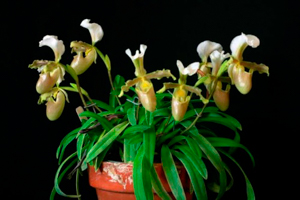
General Orchid Growing Tips
Winter's cool days and nights have already affected most collections; if all plants are not already indoors, they soon may be. Concerning daylight intensity and its duration, the seasonal change must be obvious by now. Don’t allow daytime temperatures to rise too high before ventilating the growing area. Fresh air is important for healthy plants and their owners. Just remember that if the grower can be reasonably comfortable with the temperature and humidity conditions in the growing area, the plants are likely to be satisfied too.

Cattleyas
Plants are responding to the shorter, cooler days and less intense sun by slowing and ripening their growth so reduce your frequency of watering as the plants dry out more slowly and have a lesser need for fertilizer. Cattleya skinneri should be pushing its buds up into dried sheaths for a January flowering; do not cut the sheaths off or open them. Cattleya trianiae and its hybrids ought to be blooming for several months beginning now. Many Sophronitis hybrids typically flower this season. Laelia anceps, the Christmas orchid, will have well defined buds just waiting for nature’s signal to open.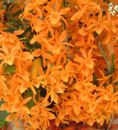
Dendrobiums
Generalizations are hard within this very diverse group. The winter resting deciduous dendrobiums of the Dendrobium (Nobiles and Seminobiles) and Callista sections (email us if you're not sure) can be kept dry and cool this month. Shoot for minimum temperatures of 40 F. Nobile type dendrobiums may show some swollen nodes on their leafless pseudobulbs and flowers may appear by the month’s end. Your other dendrobiums will also be resting up this month though not dormant. You’ll water these half as often as you did in the summer. Shoot for minimum temperatures of 45 to 55 F and 55 to 60 F for the biggibum types.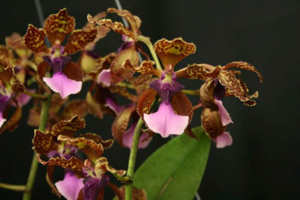
Oncidiums
The mule-ear oncidium, Oncidium splendidum, and the popular thin-leaved type, Oncidium maculatum, should be producing Inflorescences. Stake the oncidium inflorescence as it grows upward, but do not allow the tip to droop as you would for a phalaenopsis.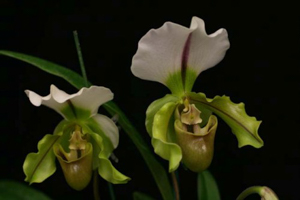
Paphiopedilums
Some of the mottled leaved species like Paphiopedilum fairrieanum and sukhakulii bloom now. Keep their potting medium moist and avoid getting water in the pouch.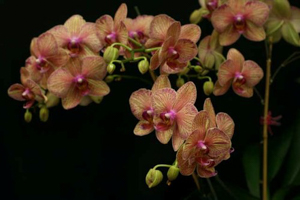
Phalaenopsis
Groom and stake each phalaenopsis spike. Avoid excess plant movement while the buds are developing or the buds may blast (wither). High humidity in a closed house can lead to flower spotting caused by Botrytis; provide supplementary air circulation with fans and/or increase temperatures above 60 F.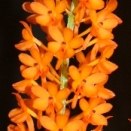
Vandas
Vandas are starting to rest now. You can gradually reduce your watering to every other day and cut back on fertilizer. Ascocentrum aurantiacum may have some beautiful orange to yellow flowers in bloom by the end of the month.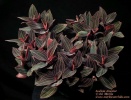
photo by Ed Merkle
